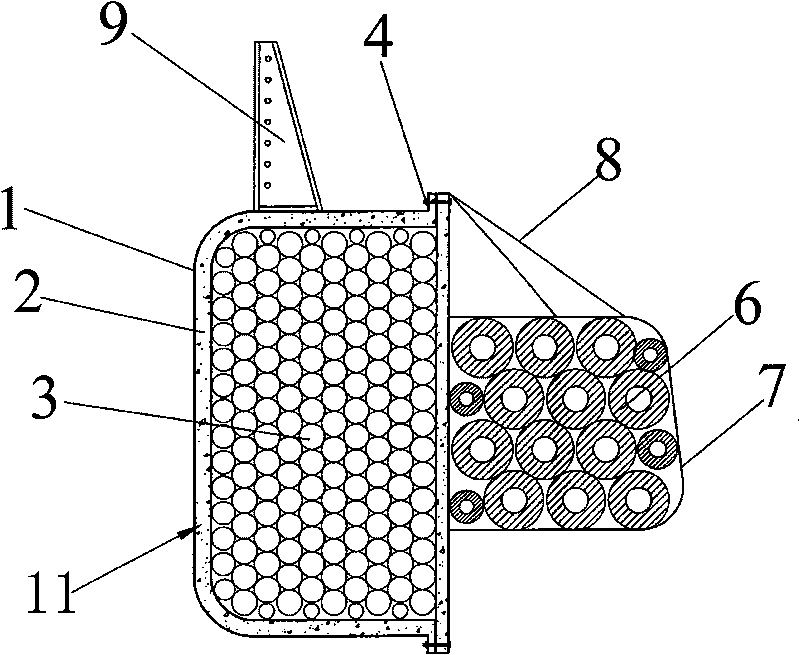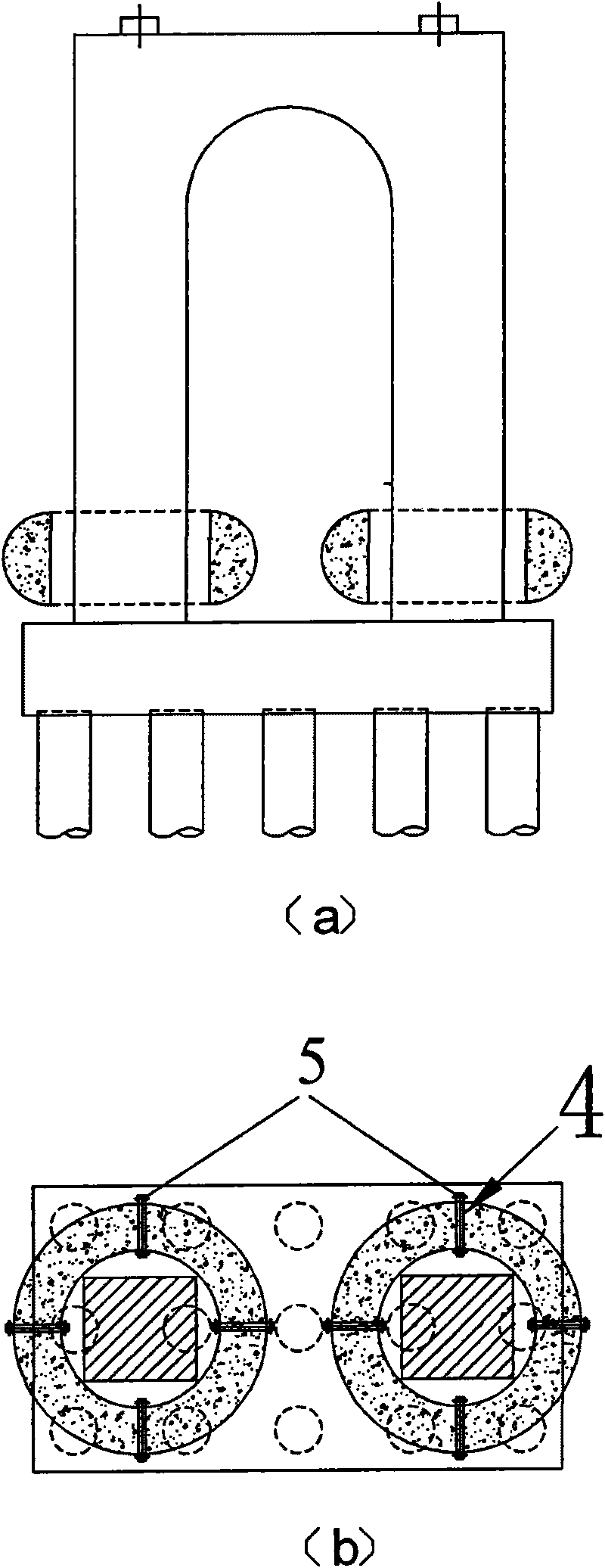Bridge anti-collision device of composite material
A technology of anti-collision devices and composite materials, applied in bridges, bridge parts, bridge construction, etc., can solve problems such as high cost, poor anti-collision effect, and difficult repair, and achieve low manufacturing cost, convenient replacement, and energy-absorbing effect Good results
- Summary
- Abstract
- Description
- Claims
- Application Information
AI Technical Summary
Problems solved by technology
Method used
Image
Examples
Embodiment 1
[0032] Such as figure 1 , 2 shown.
[0033] A composite material bridge anti-collision device, which can be in the form of a strip structure for installation on a pier, or in a ring structure matching the shape of the bridge, and the strip or ring structure has at least one figure 1 The shown anti-collision unit 10 is composed of two adjacent and mutually connected anti-collision units 10 connected by flanges 4 and bolts 5, as figure 2 (b) and figure 2 As shown in (a), the anti-collision unit 10 is composed of a shell 11 and a filling material 3 filled in the shell 11. The shell 11 is a solid shell of composite material or is made of two layers of composite material inside and outside. The structure composed of layer 1 and sandwich material 2. The cushioning material 6 is a rubber tire, rubber granules, rubber block or polyurethane elastomer during specific implementation. The sandwich material 2 is paulownia wood, balsa wood, polyurethane foam, PVC foam, PEI foam, PMI ...
Embodiment 2
[0035] Such as image 3 , 4 , 5 shown.
[0036] A composite material bridge anti-collision device, it is a strip or ring structure matching the shape of the bridge, the strip or ring structure has at least one anti-collision unit 10 and connecting rod 12 (such as Figure 4 (b) shows) composition, two adjacent and interconnected anti-collision units 10 can be connected by flange 4 and bolt 5 ( Figure 4The integral structure is adopted, so there is no need for flanges and bolts 5, when the perimeter of the anti-collision unit is long, it is best to use the flange and bolt connection structure to connect the anti-collision units into a whole), the connecting rod 12 It is installed at both ends of an anti-collision unit 10 or between two adjacent but not connected anti-collision units 10 to form a ring structure; the anti-collision unit 10 is either composed of a shell 11 and filled in the shell The filling material 3 in the body 11 and the canvas bag 7 filled with the buffer ...
example 1
[0048] In the composite material bridge anti-collision device of the present invention, the shell is a composite material surface layer 1 formed by curing glass fiber and vinyl resin, and adopts Paulownia wood core material 2 to form a composite material sandwich structure shell, and the cross section of the shell is semicircular D-shaped. Prepared by vacuum introduction process, using flanges and bolts 4 to combine the D-shaped shell and the flat shell to form a closed composite shell; the interior of the composite shell is filled with moso bamboo 3 arranged horizontally; the unit segments of the anti-collision system are surrounded by rectangular cross-section piers , using flanges and bolts 5 to form a whole circular composite anti-collision system; thin rubber blocks are set at the four corners of the rectangular cross-section pier to reduce the impact of the anti-collision ring and the pier under the action of water flow. Such as Figure 4 .
PUM
 Login to View More
Login to View More Abstract
Description
Claims
Application Information
 Login to View More
Login to View More - R&D
- Intellectual Property
- Life Sciences
- Materials
- Tech Scout
- Unparalleled Data Quality
- Higher Quality Content
- 60% Fewer Hallucinations
Browse by: Latest US Patents, China's latest patents, Technical Efficacy Thesaurus, Application Domain, Technology Topic, Popular Technical Reports.
© 2025 PatSnap. All rights reserved.Legal|Privacy policy|Modern Slavery Act Transparency Statement|Sitemap|About US| Contact US: help@patsnap.com



